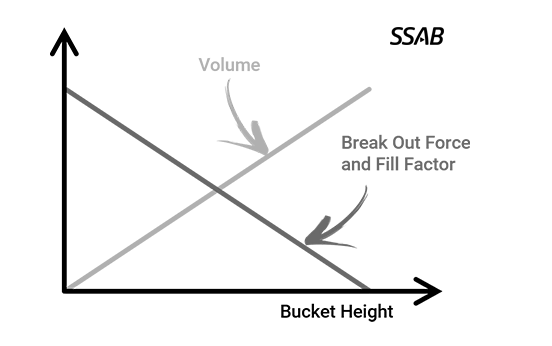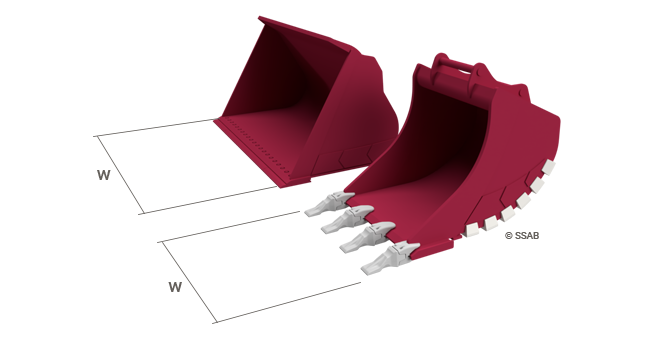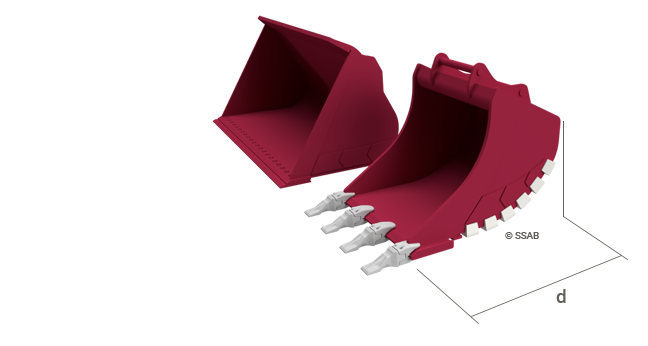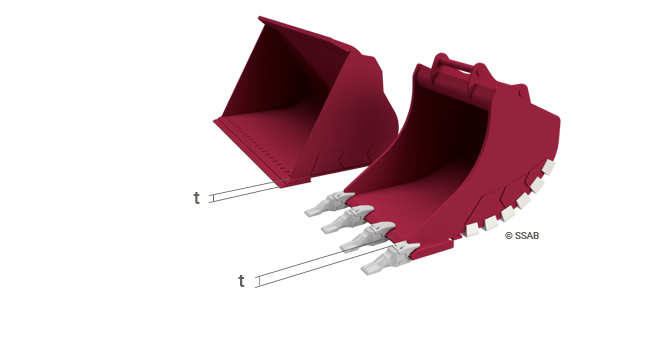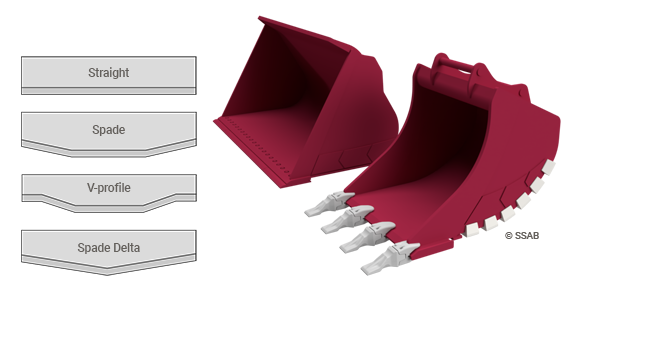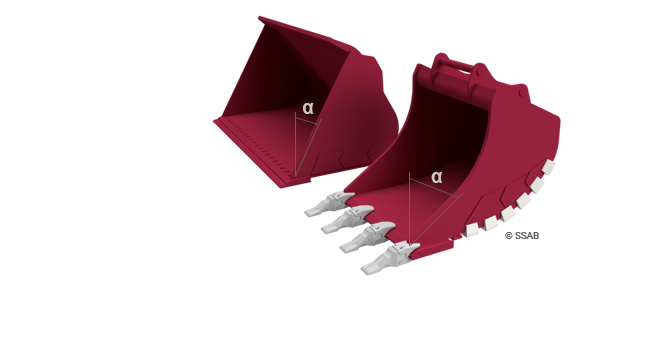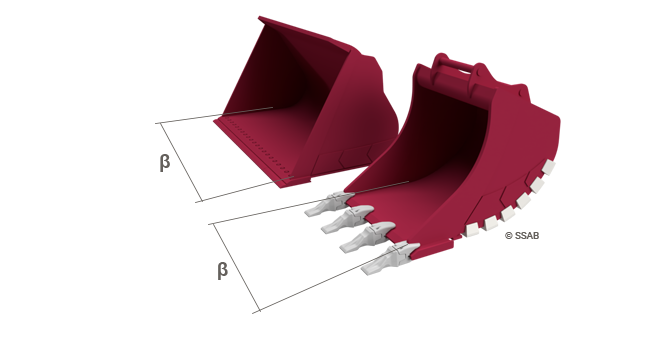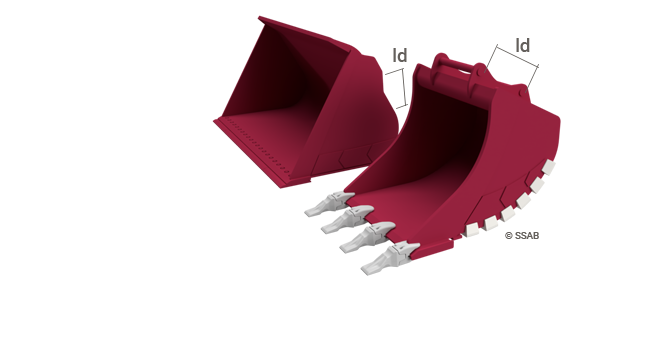1. Bucket Height
A higher bucket will have more volume, but the break out force will be decreased since the tip to pin distance will become longer. There is also an increased risk of not filling the bucket completely. For loader buckets, a high bucket will decrease the risk of rocks falling over the upper edge of the bucket and damaging the machine. Many loader buckets have an extra “fence” on top to stop rocks from falling on the machine.
2. Bucket Width
A wide bucket will have more volume, but penetration into the material will be harder.

3. Bucket Depth
Increasing the bucket depth will make a larger bucket without affecting the penetration. However, the fill- and discharge time will increase. There is also a risk of decreased fill factor. Bucket clearance will be less, which may cause increased wear under the bucket. For loader buckets, the tipping height and break out force will decrease when making the bucket deeper.
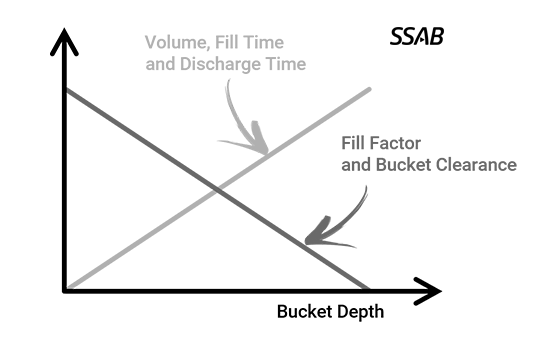
4. Cutting Edge Thickness
A thicker cutting edge will generally be stronger. However, a thick cutting edge may require a tougher plate material due to a higher degree of three dimensional stress condition. A thin cutting edge will be lighter and penetrates more easily into the material.
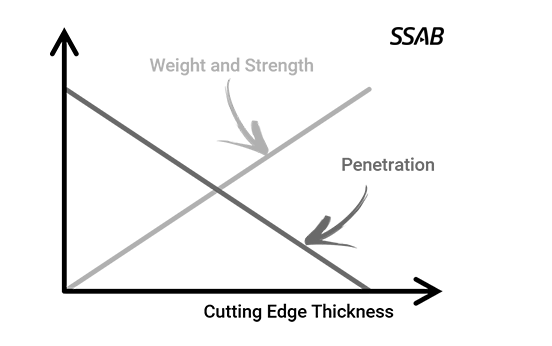
5. Cutting Edge Profile
A pointy edge will penetrate more easily into the material. When the tip to pin distance is kept constant, a more pointy edge will give less volume. To be able to use straight teeth, a V-delta or spade-delta edge can be used instead of a V or spade edge. For an excavator bucket, a more pointy edge will make it harder to keep a clean work area.
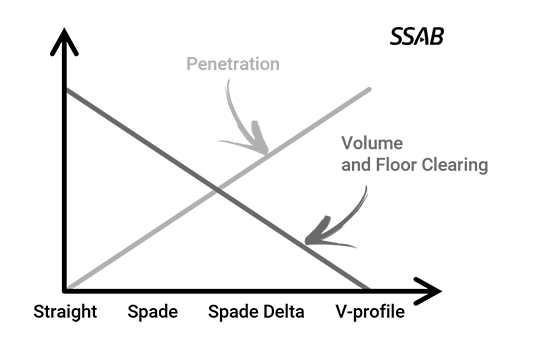
6. Rake Angle
A larger rake angle (more pointy side profile) will improve the penetration significantly, but the volume will decrease. In addition, the front of the bucket will lose strength.

7. Tapering Angle
A large tapering angle will decrease the risk of material sticking inside the bucket. The volume will decrease if the width of the bucket is kept constant. A larger tapering angle will give more wear on the inside of the bucket, but less wear on the outside.
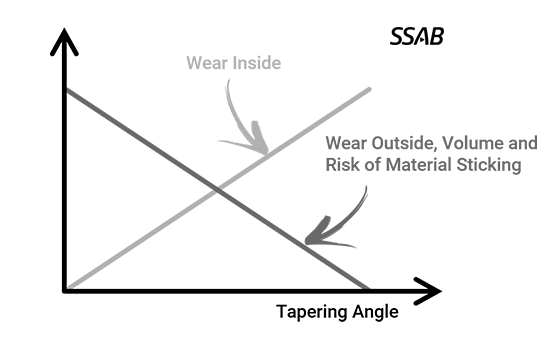
8. Pin to Tip Link Distance
A long distance between the pin and the tip link will give a high break out force. However, the speed and range of the bucket movement will be lower.
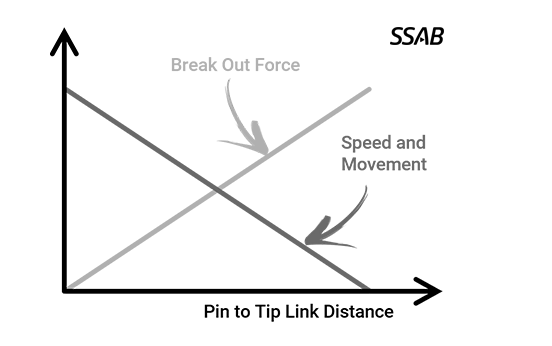
The information in this report is only applicable to SSAB’s products and should not be applied to any other products than original SSAB products.
This report provides general results and recommendations for SSAB steel products. This report is subject to SSAB’s Terms of Use. It shall be the user's responsibility to verify that the information contained herein is correct and is suitable to be used for the particular purpose and application of the user. The report is intended to be used by professional users only who possess adequate expertise, qualification and knowledge for the safe and correct use of the results and recommendations in this report. This report is provided “as is”. The use of the report is at user’s own discretion and risk and that users will be solely responsible for any use of this report. SSAB disclaims any liability for the content or potential errors of this report, including but not limited to warranties and condition of merchantability or fitness for a particular purpose or suitability for individual applications. SSAB shall not be liable for any kind of direct or indirect damages and/or costs related to or arising therefrom, whether special, incidental, consequential or directly or indirectly related to the use of, or the inability to use, the report or the content, information or results included therein.
